EDITORIAL ARTICLE
ISSUE #1
The Myth of the Decisive Moment
Type “Decisive Moment” into Google and you’re treated to a whopping 54 million results. Well, this phrase isn’t just aimlessly buzzing in the digital world; it’s become a genuine brand. We’re talking T-shirts, posters, podcast titles, even exhibition banners — it’s seemingly everywhere. This phrase has managed to weave itself into the heart of our culture. With its ubiquity, particularly as a pillar of photography teachings, you might be fooled into thinking this concept sprung from some deep philosophical root. However, the truth is quite different. let’s find out.
Let's dig a little deeper and trace its origins
Venerated street photography pioneer, Henri Cartier-Bresson, is the name that rings out whenever “The Decisive Moment” is uttered. It’s a cinch to believe this phrase perfectly sums up his photographic values. However, the real backstory offers a more nuanced view.
“À la sauvette” — a piece of French slang, hinting at swift, shadowy actions. An apt tag for Cartier-Bresson’s style, renowned for capturing candid moments in their purest form. This was his preferred title: “Images à la Sauvette”. But as the English version was primed for release in 1952, this title, let’s just say, lacked a certain commercial oomph.
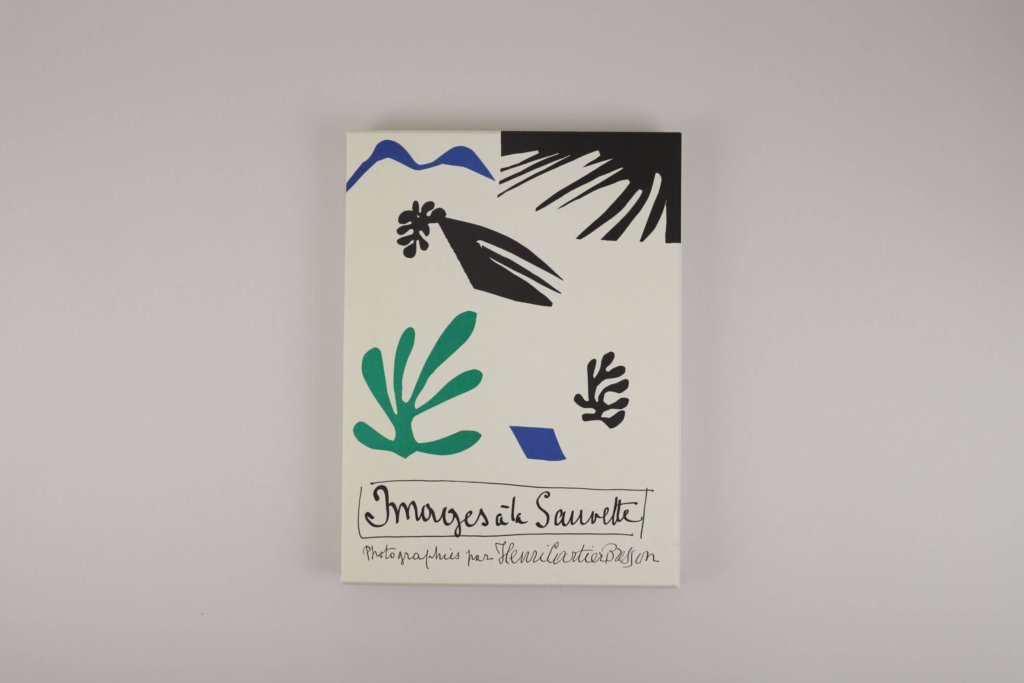
A Twist of Translation
Let’s dive into a little story. It starts with Cartier-Bresson’s American editor, whose task was to shape the book for an English-speaking audience. After casually flipping through the pages, he stumbled upon his own interpretation, dubbing it “The Decisive Moment”. And just like that, the concept was born. However, it didn’t spring from the profound musings of an artistic genius, but rather from the cunning mind of an anonymous editor with a sharp eye for a sale.
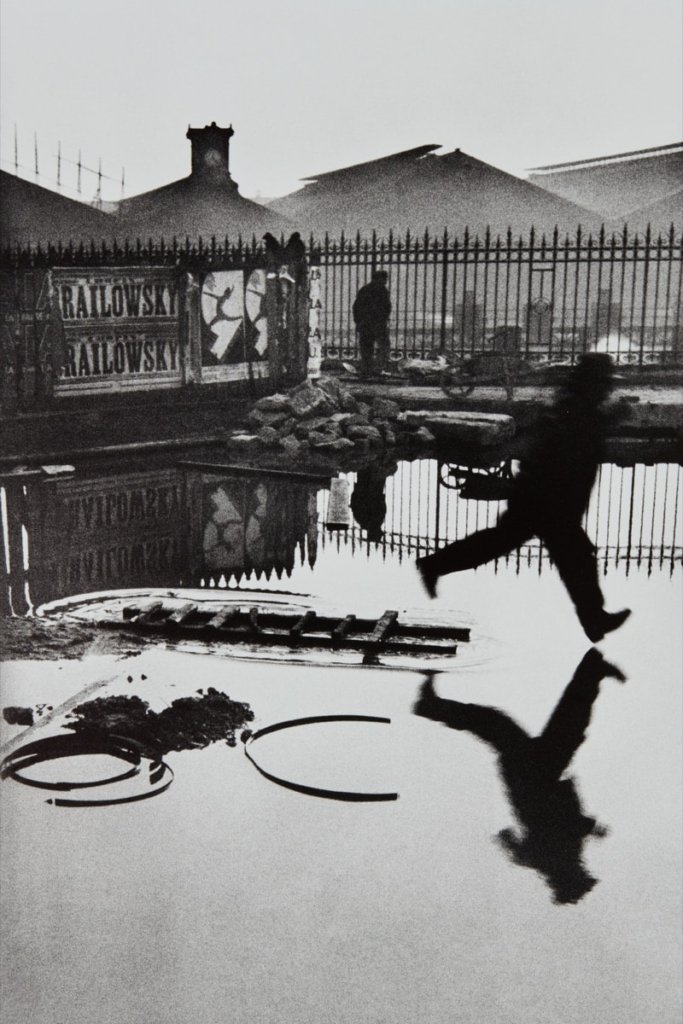
Henri Cartier-Bresson, Derrière la Gare St. Lazare, Paris, 1932 © Henri Cartier-Bresson / Magnum Photos
Decoding the Master Mind
Now, let’s turn the tables and introduce an unexpected twist: The philosophy of Cartier-Bresson was never really about the concept of a “decisive moment”. Instead, he was profoundly captivated by composition, by the art of capturing snapshots in aᅠworld that’s continuously changing and evolving. He briefly mentions aᅠterm, aᅠ“fugitive moment”, which possesses aᅠunique, specific meaning that has been widely misunderstood.
It’s not about freezing time to seize a click, but more about a ballet of dodging and weaving through the fabric of time and space. It’s about constantly being one step ahead, ready to capture that perfectly composed picture amidst the whirlwind of an ever-changing reality.
“”Composition must be one of our constant preoccupations, but at the moment of shooting it can stem only from our intuition, for we are out to capture the fugitive moment, and all the interrelationships involved are on the move.”
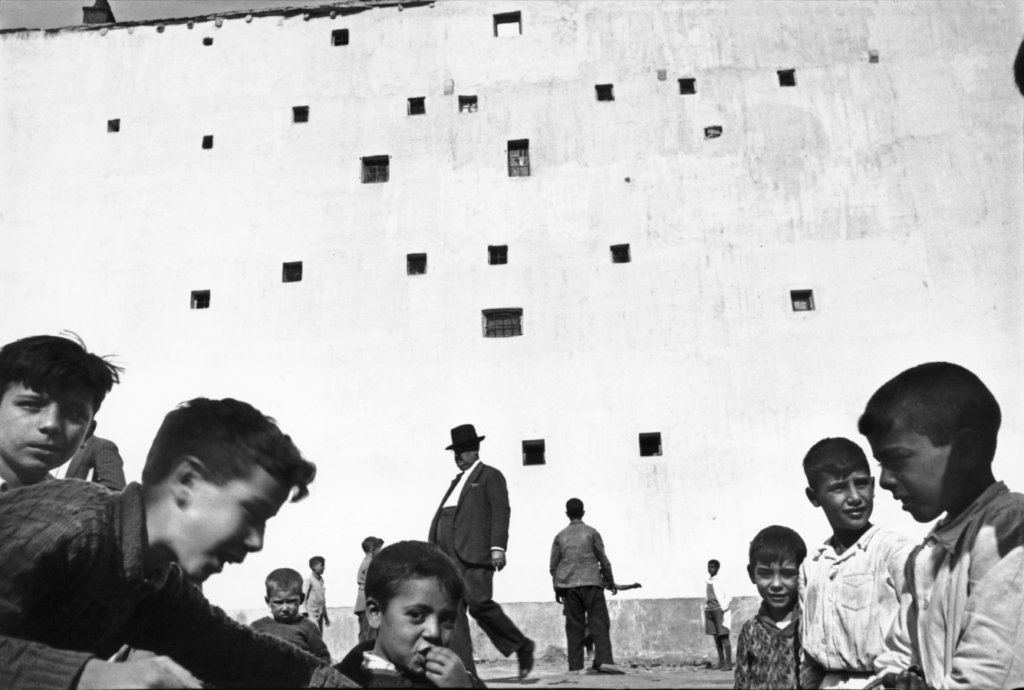
Henri Cartier-Bresson – Madrid ᄅ Henri Cartier-Bresson | Magnum Photos
The Dangerous Allure of a Catchy Concept
The allure of the so-called “decisive moment” as a concept is undeniable. It’s got some serious charm. But its very charm has swayed generations of photographers to a skewed understanding. While many see it as that elusive split-second bursting with magic—a one-off chance at nailing an iconic image—it’s more layered than just hanging around for a lucky break. This essence, gets lost in translation, turning the profound art of photography into a game of chance. And here lies the core of the problem: “Luck.” This very notion has messed with perception, making people believe it’s all about serendipity, as if Cartier-Bresson just happened to be in the right place at the right time, every single time. That’s like saying he was just a lucky bystander with a quick finger, not the artistic virtuoso he truly was. While some photographers might hit the jackpot with a single iconic shot. The consistent brilliance across Cartier-Bresson’s portfolio is not just a stroke of luck. It’s a testament to his sharp eye for composition, honed over many years of observing the world with a painter’s perspective. It wasn’t merely about that instinctual click, but rather the discerning selection from a plethora of possibilities playing out in the real world and eventually on his contact sheets.
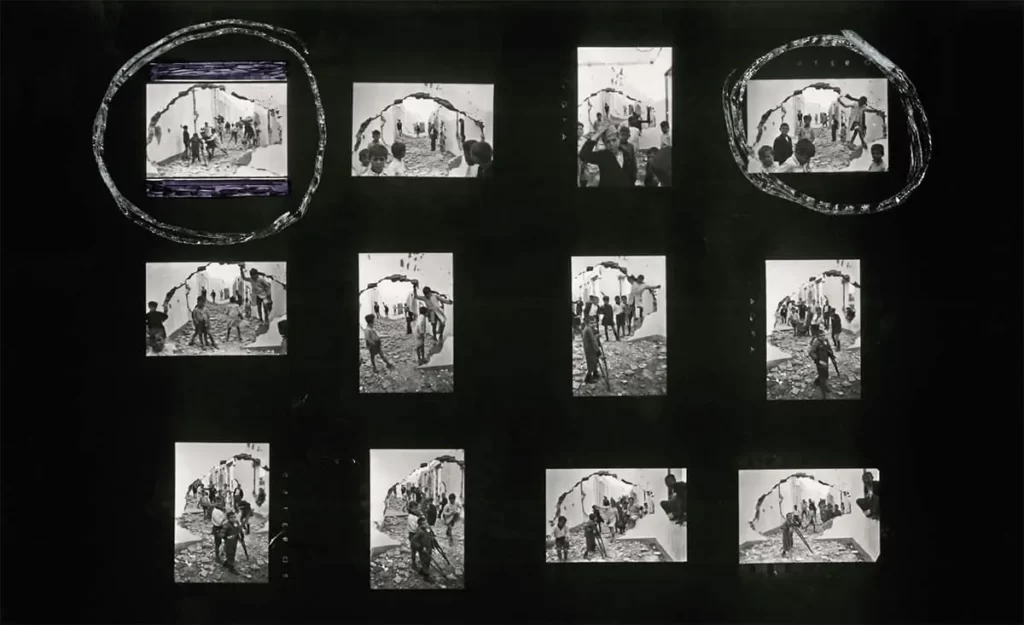
Here’s an example of a Cartier-Bresson contact sheet, where you can see multiple takes of the same scene and the chosen final picture.
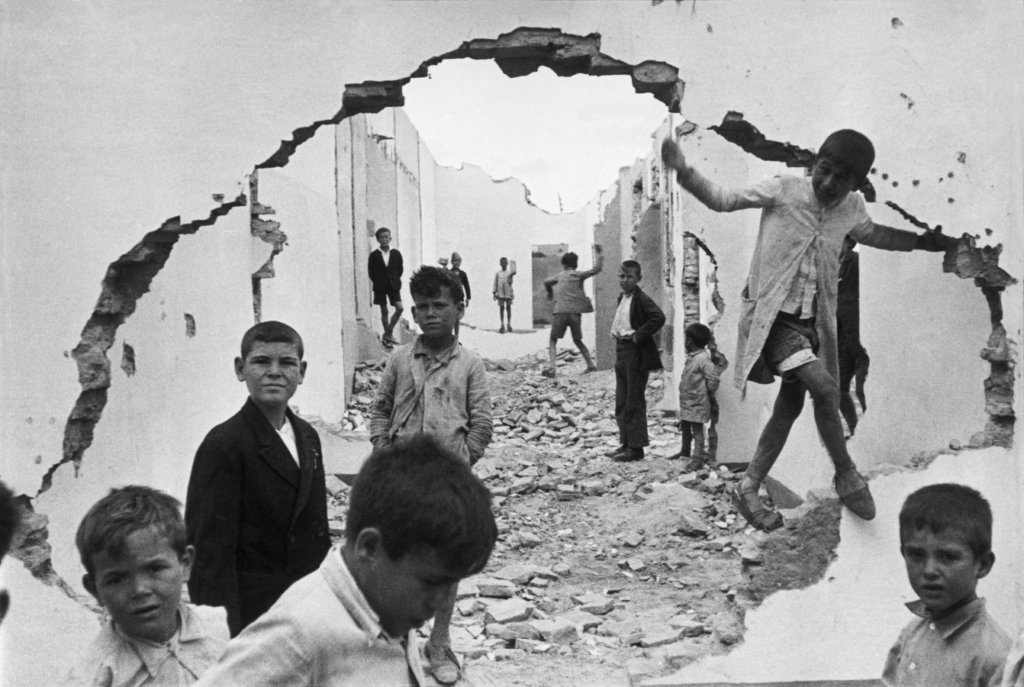
Henri Cartier-Bresson, Seville, Spain. 1933. © Henri Cartier-Bresson | Magnum Photos
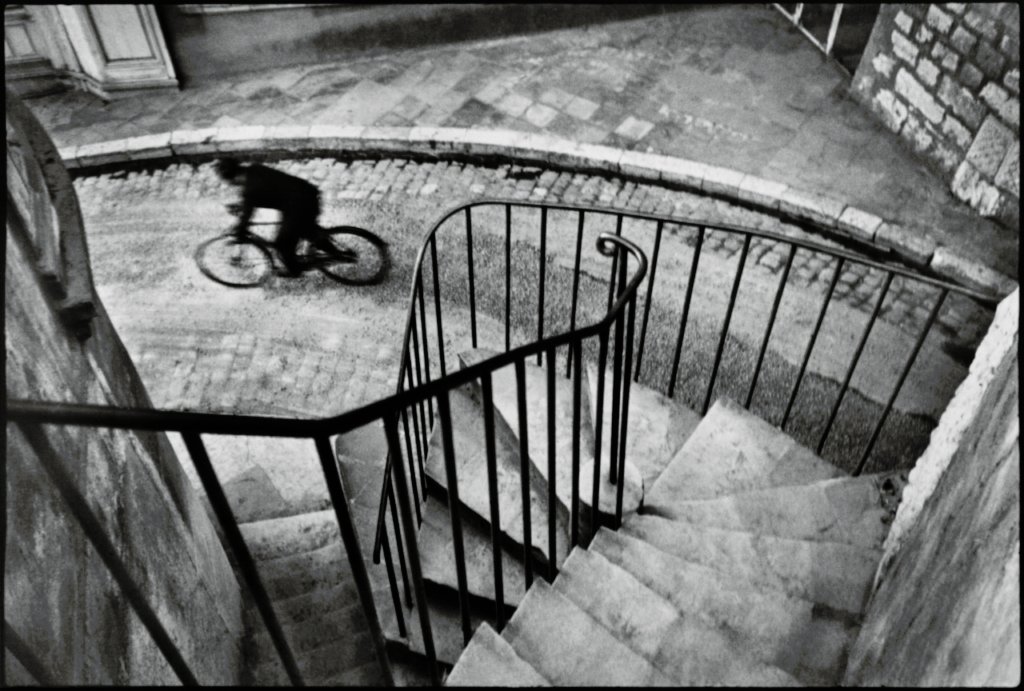
Henri Cartier-Bresson The Var department. Hyères, France. 1932. © Henri Cartier-Bresson | Magnum Photos
Make Your Own Luck
Cartier-Bresson’s images didn’t just magically show up on the first click. Multiple “decisive moments” were carefully sifted and curated in the quiet solitude of the darkroom, far from the adrenaline rush of the immediate scene. For HCB, it was always a dance of intuition and foresight, always being a step ahead of the unfolding tableau, moving in sync with it, analyzing as he went. An accomplished sketch artist in his own right, he saw photography as simply an extension of his drawing – a tool that allowed him to craft numerous potential compositions, only to later cherry-pick the standout masterpiece from the different takes.
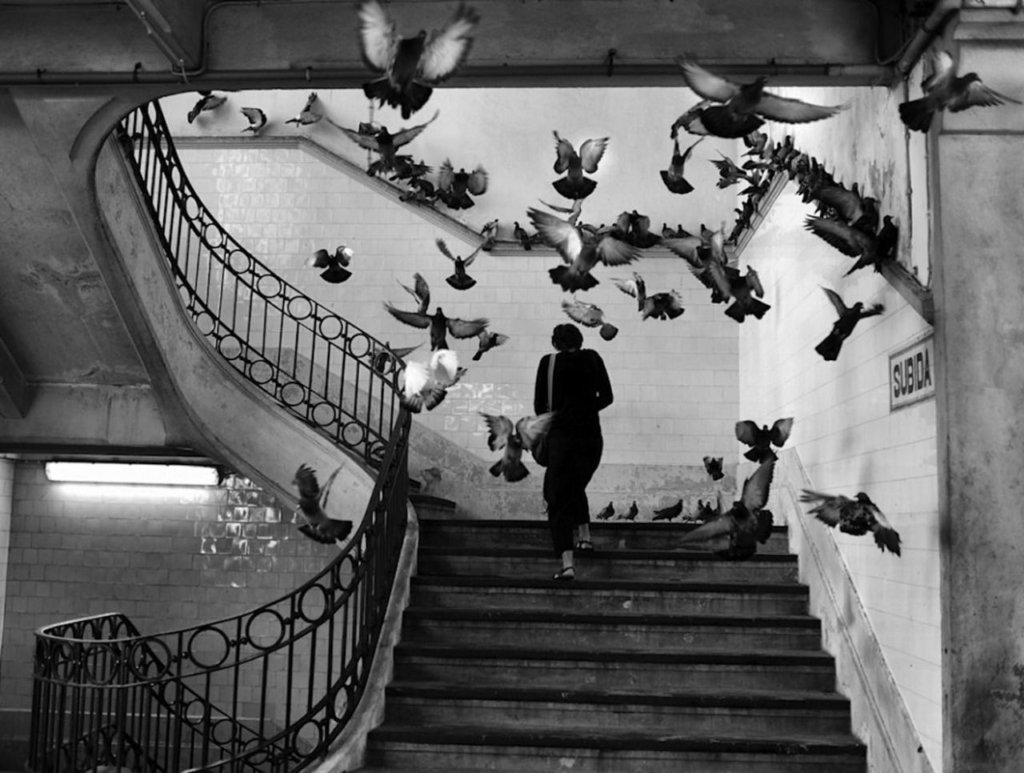
Henri Cartier-Bresson – Madrid © Henri Cartier-Bresson | Magnum Photos
It's All About Intuition
In the epic dance of art, observation and intuition are eternal dance partners, together weaving narratives of brilliance. Intuition, which is nothing else but experience talking through the subconscious, gives artists a nuanced perspective, hinting at interpretations and layers that might remain hidden to most. It’s like a quiet mentor, suggesting the intricate play of light and shadow or the pulse of an unspoken emotion. Teamed up with sharp observation, intuition becomes an even more potent tool. By keenly observing the world, artists gather a wealth of detail, and it’s intuition that picks and elevates these details into art. Creativity, then, is the gutsy act of manifesting these subtle nudges and sharp observations, of pushing beyond the conventional, of crafting pieces that resonate on a profound level.
Deep within our cognition, intuition is rooted — a natural prowess in processing immense information, far beyond the reach of our conscious thoughts. This skill synthesizes past experiences, pattern recognition, and emotional blending to rapidly deduce insights. In photography, this blend of keen observation and intuitive response is transformative.

©Tania Barrenetxea
Beyond The Moment
Cartier-Bresson, with his artistic eye, epitomized this. He immersed himself in a sea of visual stimuli, fine-tuning his intuition through constant observation of his surroundings and practice, first through drawing and painting, then as a photogrpaher. This fusion of observation and practice led to an intuition so strong that worked as his guiding light, enabling him to capture more than just images — bus masterful visual compositions.
In photography, we don’t just observe a scene; we feel its pulse, connect with its essence, and are whisked into its narrative to then turn all of that into an image. For him it was not not about the subject, but how you see the whole scene. His work goes beyond just a collection of facts; it captures the essence of mesmerizing moments in the world.
So, next time you hear the term “decisive moment,” remember the genuine philosophy of one of photography’s most illustrious artists. Embrace the dance, feel the rhythm, and craft your own “Images à la Sauvette.” MAke your own luck; perceive your surroundings as compositions, stay a step ahead, and discover the poetry in the nuances of everyday life.”
Article by Raúl Yslas
@raulyslasphoto
Latest Features
Tania Barrenetxea
Trauma
& other demons
This Spanish visual artist’s work invites a journey of self-discovery, interweaving deeply personal themes with hope and nostalgia.
Jonathan Jasberg
The
Nomadic Lens
Living a nomadic life since 2010, this street and documentary photographer has engaged in rich cultural explorations across 60 countries.
Warun Siripichai
A City
Underwater
Bangkok’s crisis epitomizes global warming, with images of submerged life offering a testament to resilience.
Tatsuo Suzuki
Tokyo's
Street Poet
Blending urban Japan with emotion, Suzuki’s monochrome photography reveals the japanese megalopolis real face and soul.
Latest ARTICLES
LONG LIVE PHOTOGRAPHY
THE MYTH OF THE DECISIVE MOMENT
Get the best
of photography
in your INBOX
Subscribe to Pictorique’s newsletter and get updated with the latest news about features, reviews, and competitions.
Pictorique International is a Postdata Media Company
© All Rights Reserved 2023
All images rights belong to their respective authors.